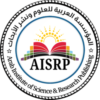Spatial Analysis of Air Quality in the area of Imam Turki bin Abdullah Royal Reserve
In the Kingdom of Saudi Arabia
Prof. Ahmed Abdullah Al-Dughairi
Geography Department | Qassim University | KSA
Abstract: The Imam Turki bin Abdullah Royal Reserve occupies parts of Northern and Central Saudi Arabia, and includes parts of Al-Qassim, Hail, the Eastern region and the Northern borders. This research is derived in solidarity with the vision of the kingdom of Saudi Arabia, which strives tirelessly in the development and management of its natural reserves, which have suffered and still are from environmental stress that has lasted for long periods of time. The study aims to shed light on the air quality in the reserve during the peak period, which starts around Eleven o’clock During 1444 and lasts for hours, from which the developer can observe the sites where he is considering to conduct more detailed in-depth studies of air quality conditions, especially those that affect the growth of natural vegetation in the Reserve.
In order to provide an accurate analysis of the spatial distribution of air quality in the Reserve, we have relied on Spatial Analysis Techniques Interpolation IDW, and thermal values were analyzed from Terraclimate data with spatial clarity (4×4 km) as obtained from the Climate Engine platform, the analytical results have shown ideal values in the quality of its air, in terms of distance from industrial influences, or sources of pollution, the study also showed the presence of a relative effect of aerosols in the East and north sites of the reserve due to emissions from some surrounding factories and rock grinding projects in the surrounding cities and abandonment, possibly the product of car exhaust combustion in the roads connecting the territory of the Reserve is exposed to the effects of rushing aerosols during the surface or upper layers of the atmosphere, but the values support it, as being in moderate values that do not adversely affect the environment of the reserve.
Keywords: Air quality, Aerosols, Ground ozone.
التحليل المكاني لجودة الهواء في زمام محمية الإمام تركي بن عبد الله الملكية في المملكة العربية السعودية
الأستاذ الدكتور / أحمد بن عبد الله الدغيري
قسم الجغرافيا | جامعة القصيم | المملكة العربية السعودية
المستخلص: تشغل مَحمِيَّة الإِمَام تركي بن عبد الله الملكية في أجزاء من شمالي ووسط المملكة العربية السعودية، وتظم أجزاء من القصيم، حائل، المنطقة الشرقية والحدود الشمالية، يأتي هذا البحث تضامننا مع رؤية المملكة العربية السعودية التي تسعى سعيا دؤوباً في تنمية وإدارة محمياتها الطبيعية التي عانت وتعاني من اجهاد بيئي استمر فترات زمنية طويلة. وتهدف الدراسة إلى القاء الضوء على جودة الهواء في المحمية خلال فترة الذروة والتي تبدأ في حدود الساعة الحادية عشرة وتستمر سويعات وذلك في عام 1422ه، ومنها يمكن للمخطط النظر في المواقع التي ينظر فيها لأجرا مزيد من الدراسات التفصيلية المعمقة لجودة الهواء خاصة تلك التي تؤثر على نمو الغطاء النباتي الطبيعي في المحمية.
تحاول هذه الدراسة محاولة الإجابة على تساؤل وهو ما لتوزيع المكاني لجودة الهواء في زمام المَحمِيَّة في ساعة الذروة؟ وهل يمكن انجاز قاعدة بيانات رقمية لجودة الهواء في المحمية؟ ، وإزاء ذلك فقد تم الاعتماد على تقنيات التحليل المكاني Interpolation -IDW،وتم تحليل القيم الحرارية من بيانات Terraclimateبقدرة وضوح مكانية (4×4 كلم) حيث تم الحصول عليها من منصة Climate Engine ، وقد أظهرت النتائج التحليلية قيم مثالية في جودة هوائها، حيث البعد عن المؤثرات الصناعية، أو مصادر التلويث، كما بينت الدراسة وجود تأثير نسبي للهباء الجوي في شرقي وشمالي المحمية جراء الانبعاثات من بعض المصانع المحيطة، و مشاريع طحن الصخور في زمام المدن والهجر المحيطة ، وربما نتاج احتراق عوادم السيارات في الطرقات الرابطة بين ام عشر ولينه و رفحاء ، هذا وتتعرض أراضي المحمية لتأثيرات الهباء الجوي المندفع خلال طبقات الجو السطحية أو العليا ولكن القيم تدعم كونه في معدلات معتدلة لا تؤثر سلبيا على بيئة المحمية.
الكلمات المفتاحية: جودة الهواء، الهباء الجوي، الأوزون الأرضي
